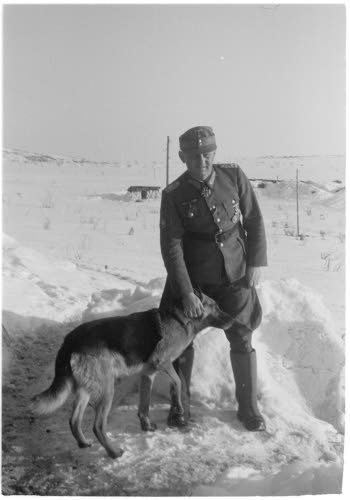Years of service 1914–211934–45 Other work Police Officer | Name Georg von | |
 | ||
Battles/wars World War IWorld War IIAnnexation of AustriaInvasion of PolandOperation WeserubungOperation BarbarossaOperation SilberfuchsOperation Platinfuchs Battles and wars World War I, Anschluss, Invasion of Poland Commands held 2nd Mountain Division, Mountain Corps Norway | ||
Service/branch Waffen-SS, German Army | ||
Georg Ritter von Hengl (21 October 1897 – 19 March 1952) was a general in the Wehrmacht of Nazi Germany during World War II who commanded the XIX Mountain Corps. He was a recipient of the Knight's Cross of the Iron Cross.
Contents
During World War I, he had served in the Luftstreitkrafte and shot down a total of 7 aircraft between July and October 1918. From 1921 to 1934, he also served in the German police, reaching the rank of Hauptmann. Georg Ritter von Hengl was captured by Allied troops in May 1945 and was released in 1947.
World War I service
Hengl served initially in Reserve Infantry Battalion Nr. 21 near Ypres in 1914. The following year saw him transferred to the Eastern Front to serve in Russia. In October 1915, he was transferred south to the Serbian sector. He transferred back to France in 1916, to serve near Verdun; on 23 March he was promoted into the officer's ranks as a Leutnant. He then returned to duties in Russia. After requesting a transfer to aviation duty, he started aerial observer's training on 23 February 1918. Upon graduation, he was posted to the Kingdom of Bavaria's FA(A) 295. His usual pilot in the two-seater reconnaissance aircraft was Johann Baur. The duo were credited with six confirmed aerial victories together, beginning with a double victory over SPADs on 17 July 1918 over Courton Wood. The aircrew of Hengl and Baur were shot down behind British lines during the Third Battle of the Aisne; however, they were rescued from captivity by troopers from Württemberg. The pair would score another four victories in October 1918, with Hengl scoring a seventh while crewing for another pilot.
Georg Hengl emerged from World War I having been awarded both classes of the Iron Cross and the Royal House Order of Hohenzollern. His native Kingdom of Bavaria also bestowed the Military Order of Max Joseph upon him; one of the entitlements of this decoration was an award of lifetime nobility for him, signified by the addition of the phrase "Ritter von" to one's name. Georg Hengl thus became George Ritter von Hengl.
